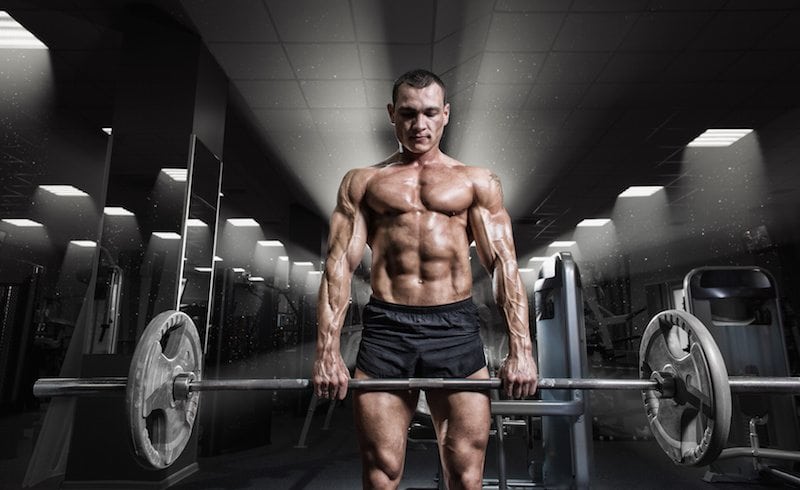No products in the cart.
Defeat Your Genetics With Hyperplasia

When you increase the size of your muscles it is almost universally agreed that this is the result of Hypertrophy. But what is Hypertrophy? It is where your muscle fibres increase in size in response to exercise.
Let’s take a brief look at how this works.
You perform a muscular contraction, bicep curling a dumbbell. You repeat this until you reach muscular failure, or if you’re sensible you stop before reaching failure.
Either way at the end of the session you are suffering from muscular fatigue, your biceps brachii are now experiencing muscle damage.
This is where the muscle fibres have become damaged and are in need of repair.
To repair the damaged fibres the body requires protein. This is why you need more protein if you’re training regularly than someone who isn’t [1].
So let’s say you’ve taken the required protein. Now your body is going to use this protein to repair the damaged fibres through a process known as Muscle Protein Synthesis.
The muscles will not only be repaired, but they will be strengthened and will increase in size. This increases the cross-sectional area of the muscle, which is known as Hypertrophy.
For most people, Muscle Hypertrophy is the only way that a muscle can ever grow in size and there is a lot of scientific evidence that Hypertrophy is solely responsible.
However, there are the beginnings of a debate between different experts in the field that a process known as Hyperplasia is also responsible.
Firstly it has been conclusively proved that Hyperplasia exists, this isn’t some fringe theory.
Hyperplasia itself is defined as “increased cell production in a normal tissue or organ” [2].
This can happen naturally, in his article on “Hyperplasia in Human Muscle” Paul Davies mentions that “The tonsils grow by hyperplasia to enhance the immune response in a child with a throat infection” [3].
Hyperplasia in muscles is a theory that as well as the muscle fibres increase in size (Hypertrophy) the muscle may produce more muscle fibres as a response to training (Hyperplasia).
There is a lot of evidence of this occurring in animals. Alway et al (1985) found that birds who had a weight attached to their wing increased muscle mass by 172% and increased fibre number by up to 75% [4].
In his superb article on Hyperplasia, Jose Antonio talks about how using progressive overload he managed to increase the muscle mass of his bird by 334% and increase fibre number by 90% [5].
According to Jose, this proves that when skeletal muscle is stimulated enough it can produce more fibres.
This is HUGE. It means that Hyperplasia exists and can be affected by resistance training. Though Jose is quick to point out that it is unlikely to affect regular gym-goers.
In fact, it is most likely to affect Bodybuilders as they are the only ones training sufficiently for Hypertrophy.
Obviously athletes and powerlifters train often, but they are not training for Hypertrophy they are either training for strength or for performance.
Larsson and Tesch (1986) looked at experienced bodybuilders and compared their muscle fibre size with those of sedentary people.
They found that both groups had similar-sized muscle fibres but that the bodybuilders had a much greater number and density of fibres.
They concluded that the bodybuilders’ size was in fact due to Hyperplasia [6].
This is a controversial opinion, and other studies have both backed up and disproved these findings.
According to Jose Antonio, it is most likely that Hyperplasia can occur in human skeletal muscle but that it is rare, and needs specific stimuli.
So How Can I Benefit From Hyperplasia?
Essentially you need to be a bodybuilder! In which case just concentrate on that, make sure that you are ‘feeling the muscle‘ through perfect form.
Make sure that you are concentrating on the eccentric part of the lift in particular as a lot of studies have found that this can produce greater Hypertrophic gains. This means that it is more likely than any other training method to produce Hyperplasia.
This might feel like frustrating advice “I wanted Hyperplasia to help me become a bodybuilder, and you say that I need to become a bodybuilder to get Hyperplasia” is probably being shouted by some of you.
But at the end of the day, you’ll get out of training what you put in.
If Hyperplasia only seems to benefit bodybuilders and your goal is to be a bodybuilder then your task is a simple one. Train like a bodybuilder.
If you don’t want to become a bodybuilder then clearly Hyperplasia isn’t necessary for you to achieve your goals.
Save
